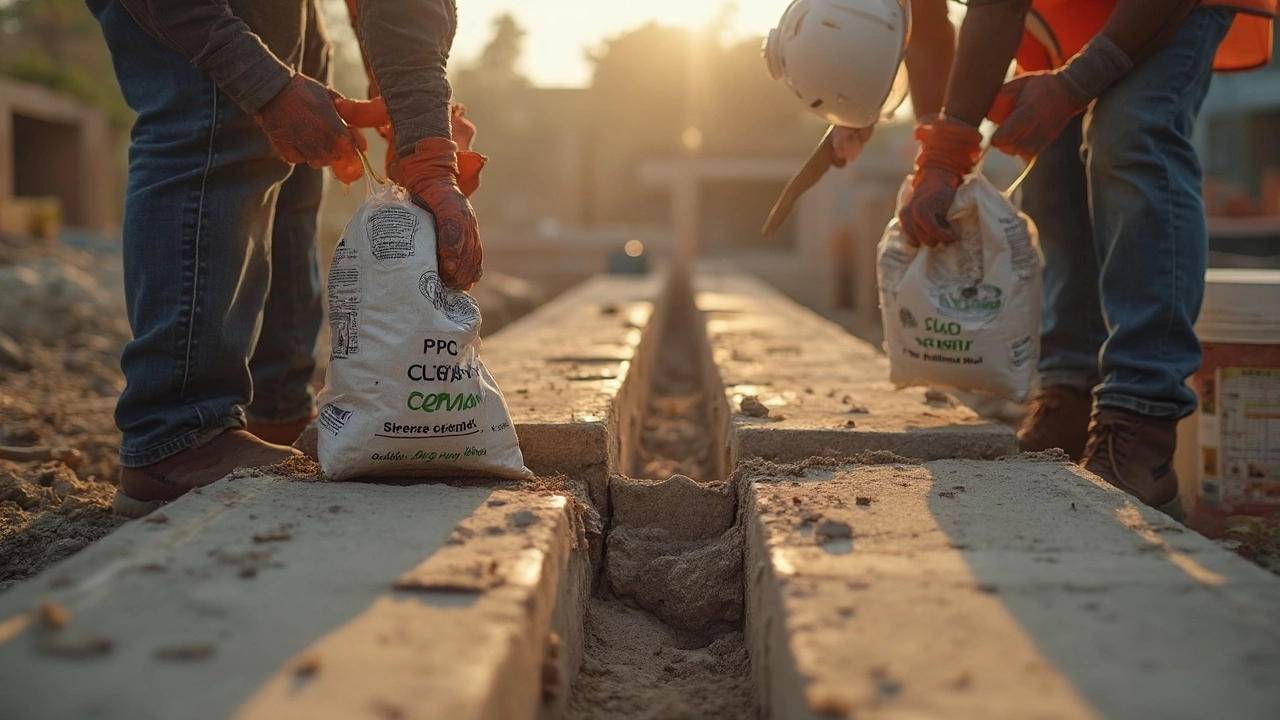Cement Mix for Repairs: Best Recipes and Common Mistakes
When you're fixing a cracked sidewalk, patching a broken step, or sealing a crumbling brick joint, the cement mix for repairs, a blend of cement, sand, and water used to restore damaged masonry and concrete surfaces. Also known as repair mortar, it's not just about sticking things together—it's about making sure the fix lasts without pulling away, cracking again, or washing out in rain. Too much water? It crumbles. Too little? It won’t bond. Get the ratio wrong, and your repair becomes a temporary patch at best, a safety hazard at worst.
Most people think any bag of cement will do, but that’s where things go wrong. For small cracks in driveways or patio slabs, a mortar mix, a pre-blended combination of cement and fine sand designed for thin applications and surface repairs works best—it’s easier to trowel, dries smoother, and grips better than plain cement. For deeper structural fixes, like foundation cracks or broken steps, you need a concrete repair mix, a stronger blend with coarse aggregate and bonding agents to handle load-bearing stress. These aren’t the same thing. Using mortar where concrete is needed? It’ll flake off in months. Using plain cement without sand? It’ll shrink, crack, and turn to dust.
And then there’s the water. People add it because the mix looks too dry. Don’t. Every extra ounce of water weakens the final product. The ideal mix should hold its shape when you squeeze it in your hand—like damp snow. If it drips, it’s too wet. If it won’t stick to the trowel, it’s too dry. Add water slowly, a tablespoon at a time, and stop as soon as it’s workable. Also, never skip the bonding agent. A little liquid polymer or concrete adhesive mixed in doubles adhesion, especially on old, dusty surfaces. It’s cheap. It’s easy. And it’s the difference between a repair that lasts five years and one that fails in six months.
What you fix matters too. Patching a vertical wall? Use a stiffer mix with less water. Repairing a horizontal surface? You can go slightly wetter for easier spreading. Brick joints need finer sand—too coarse and it won’t fit into the narrow gaps. And if you’re working in cold weather, forget about water-only mixes. You need a cold-weather additive or a special repair compound designed for low temps. Freezing before it cures? The whole thing turns to powder.
What you’ll find below are real, tested methods from people who’ve done this before—fixing foundations, driveways, chimneys, and steps without calling in a pro. No fluff. No theory. Just what actually works on the ground. From the simplest crack filler you can make in your garage to the right mix for heavy-duty structural fixes, these posts show you exactly how to get it right the first time—and avoid the mistakes that cost homeowners thousands.
Best Cement for Foundation Repair: Expert Guide and Tips
Discover which cement is best for foundation repair. Learn about concrete types, their pros and cons, application tips, and common repair mistakes.
Learn more...